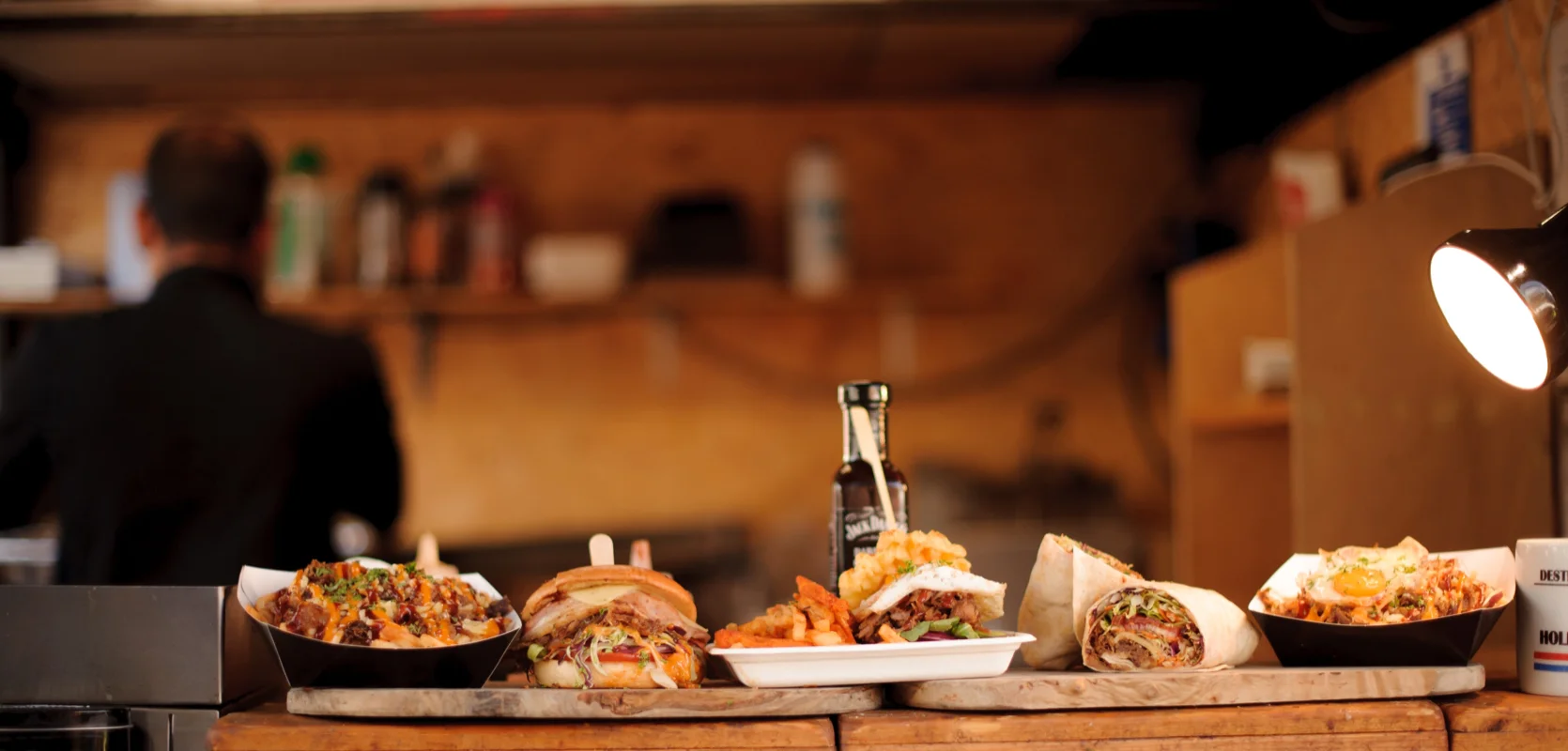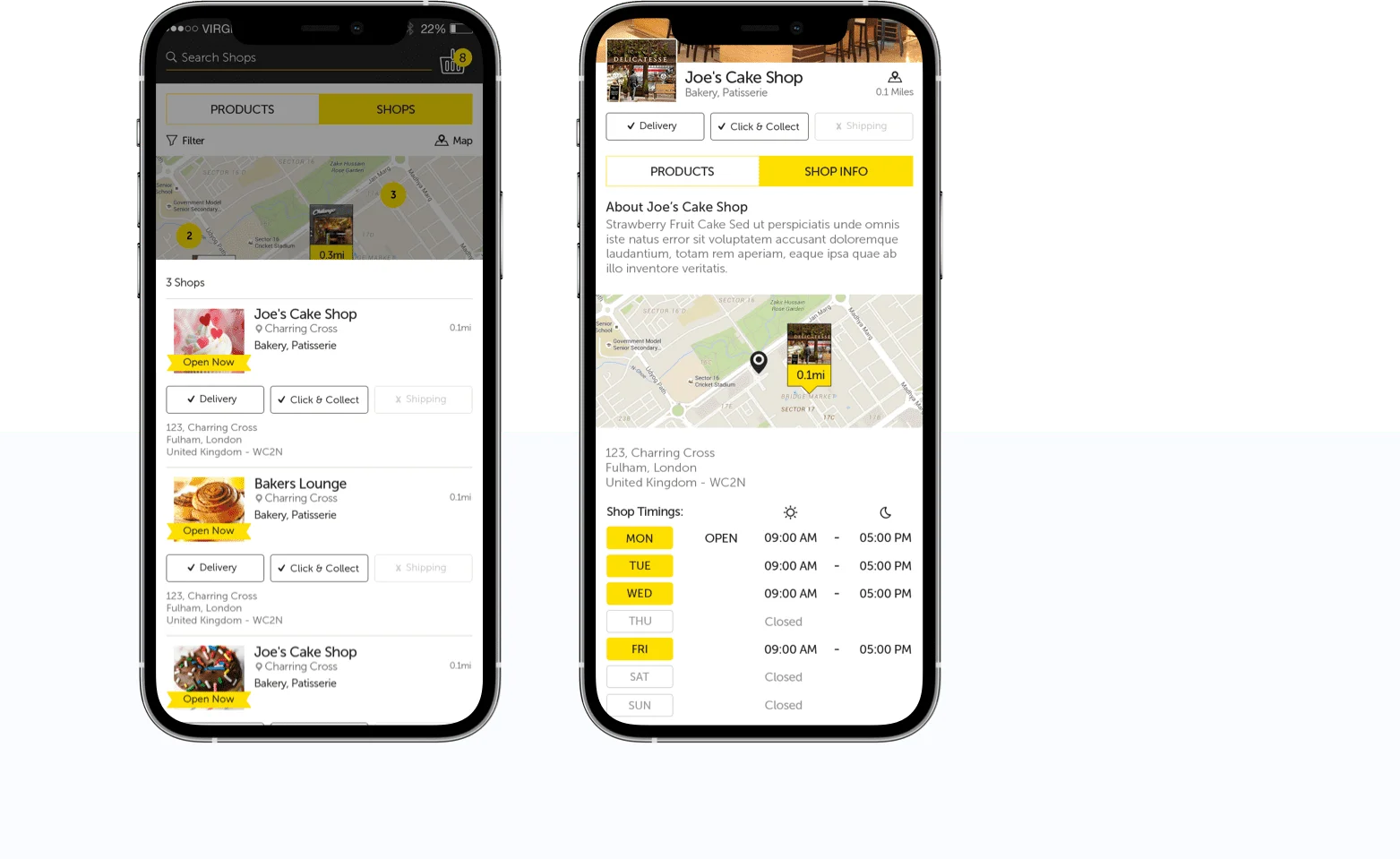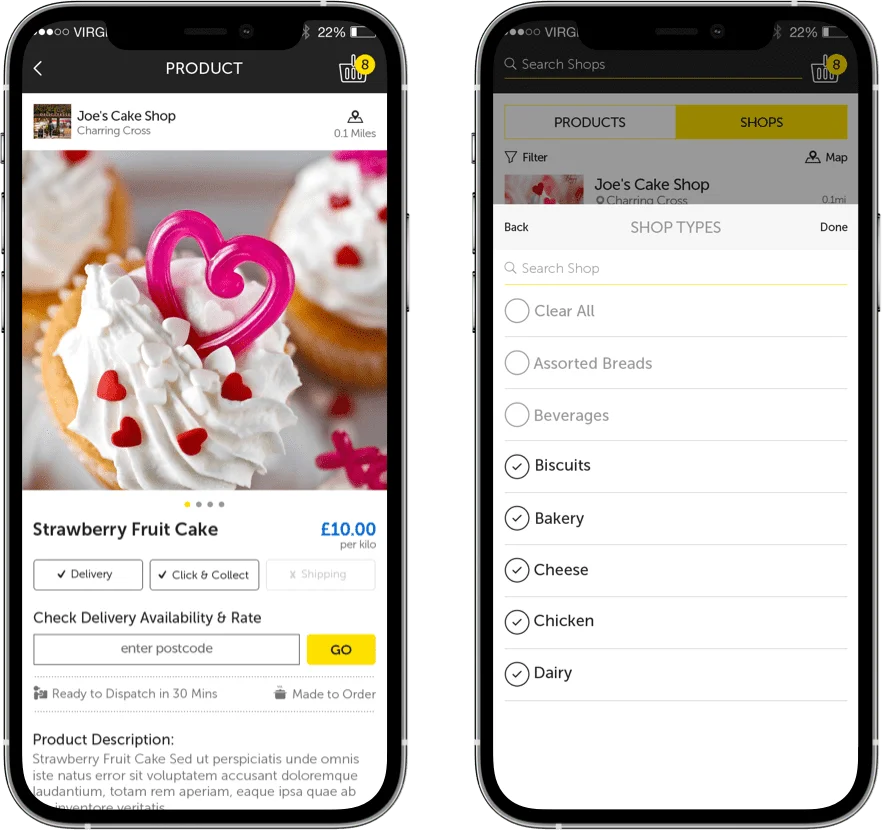
Client
Scoff
Industry
Food & Beverage
Features
Hyperlocal Food Ordering Platform
Single Buyer/Seller App
Highly Customisable Shops & Products
Shutl Integration for Delivery
Stripe Integration with Passthrough Payments
Technology Stack
Lauren Steenholdt and her brother Blair had worked for many years in the food and beverage industry, and they noticed a significant gap in the market. While online food delivery was becoming more and more popular, these aggregator platforms did not work as well for local restaurants—delivering a poor experience for business owners to their customers.
The sibling duo realized they could build a platform to cater to local businesses and their patrons, creating a better experience for everyone. They wanted a platform that prioritized hyperlocality and allowed local sellers to deliver fresh, tasty meals to customers within the neighborhoods they served.
The founders spent two years developing their idea, and they approached Net Solutions to build out the backlog, wireframes, and workflows.

To build the platform, they reached out to several app developers around the world, including Net Solutions. Net Solutions stood out because of their extensive experience in mobile app development along with their work creating technology for the Food & Beverage industry.
They asked probing questions that showed they were interested in building a future-proof platform—one that could seamlessly handle upgrades and enhancements in the years to come. Blair and Lauren also needed a platform that could scale quickly, since they planned to launch in the booming metropolis of London.
Finally, Net Solutions was the only company that was transparent about the project timeline. While another company promised to deliver the entire project in three months, Net Solutions explained how, and why, only a Minimum Viable Product (MVP) would be possible in that timeframe.
The founders decided to put their trust in Net Solutions, and they commissioned them to start work in an Agile engagement, beginning with an MVP.
Net Solutions began by working with Lauren and Blair to build out the scope for their MVP. Working interactively, the Business Analyst team discussed:
In the end, they whittled the scope of the entire platform down to its essentials—an MVP that would enable them to introduce the product to the market, allowing them to gather feedback and work toward an even more powerful platform.
While Net Solutions finalized the scope, their UI team expanded on the wireframes to create a UI framework. They then implemented the UI framework across various screens, creating a consistent UI for the entire app, which had the following features.
Easy Customer Signup: The mobile-based app allowed customers to sign up using an email address or phone number.
Helpful Search Features: As a customer, users could either search for a specific dish or browse sellers near them. The app showed the closest vendors by default but allowed customers to expand their search radius to move beyond their neighborhood. The customer could also search for, and provide, a specific area for delivery. When they did so, the app showed the closest sellers to that geographic point.
When there were many sellers within a specified area, the app grouped them together so the customer could see a list of all the vendors and scroll through them. Of course, the customer could find specific sellers by name as well, regardless of distance.
Seller Profiles: When searching for a dish, the customer could tap on the seller’s name to view a complete profile. The seller profile provided key details, including their location, the dishes they offered, different delivery methods, etc.
Customization Options: Based on the seller’s preferences, the user could custom-order specific items. They could also place a single order with multiple delivery options.
Delivery Designed for Small Businesses: Since most small shop owners do not have dedicated delivery fleets, Scoff integrated a delivery service called Shutl into the platform. When the seller received an order, they could use the app to specify a pick-up time for each order.
Payment Integration: When customers placed an order, the platform used Stripe to handle payment processing and send electronic receipts in real-time, holding commissions and Shutl fees if applicable.
This saved the seller from having to chase the platform for payments or trying to remember when or how much to pay the platform. It was transparent and consistent, and sellers loved it.
Customizing Hours: Unlike big chains, small shops sometimes vary their hours. To accommodate this need, Net Solutions made it easy for shops to change their listed hours of operation whenever they saw fit.

What truly set Scoff apart from other food delivery apps was that anyone could open up shop and become a seller on the platform. And they could switch between “buyer” and “seller” mode with the touch of a button.
Each seller could then provide:
The seller could add or remove items, enabling or disabling them whenever they chose. The customers browsing the platform would only see the latest information, and the seller maintained complete control.
The seller could even specify the preparation time for different items. For example, if a dish took longer than others, the estimated “ready” or “delivery time” would change accordingly. And if a dish took longer than expected, the system would calculate the new delivery time and notify the customer.
Finally, when a seller received an order, they could review and confirm it, specifying when it would be ready for pickup. If they could not take the order for any reason, they could reverse it immediately and the system would quickly notify the customer.
One of the greatest challenges in building this application was to accommodate the functionalities of both user and buyer—in the same user window. This is known as a double-sided marketplace.
In other words, the new system would allow a single user to sell their catalog, maintain their shop, and purchase food items from other nearby shops—as a buyer!
Since the same user was allowed to behave as a buyer as well as a seller, many features had to appear on a single screen. All of this needed to work seamlessly without hampering the user experience. And since this platform was the first of its kind in the region, they needed to build a highly intuitive UI.

Shortly after launching in London, small restaurants and independent chefs quickly adopted the new technology. In turn, their customers began using the app to order fresh, local dishes that Uber Eats and other big delivery services simply couldn’t accommodate.
Lauren and Blair had a powerful idea designed to address a need in the food delivery industry, and they turned to Net Solutions to make it happen. They realized that a double-sided marketplace catering to small restaurants, independent chefs, and their customers would require thoughtful planning and careful execution, and they relied on Net Solutions to bring that vision to life.